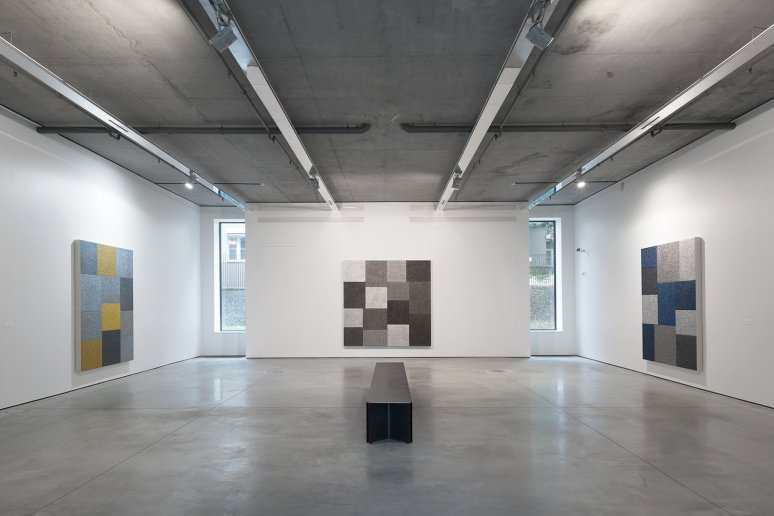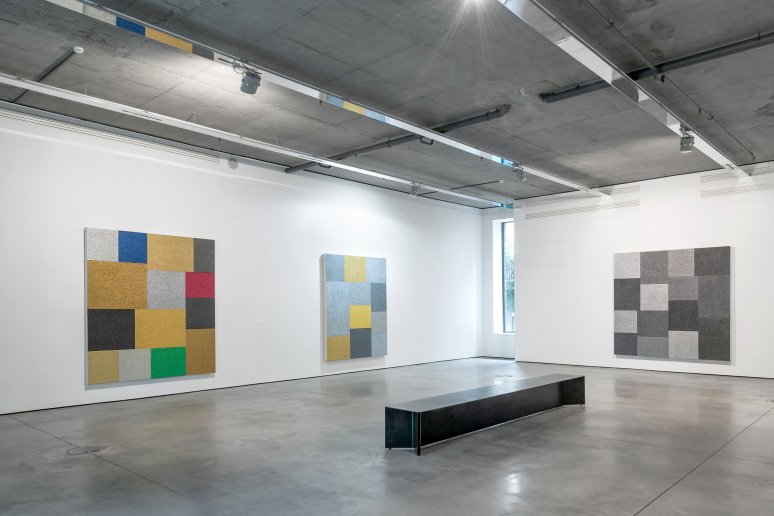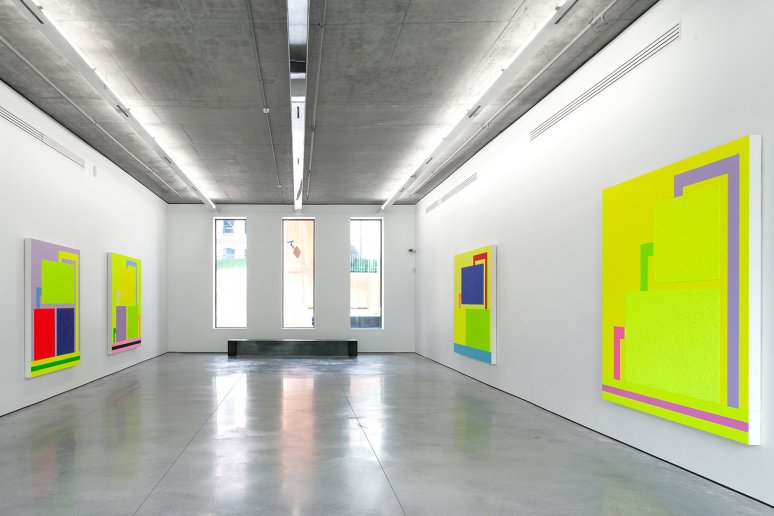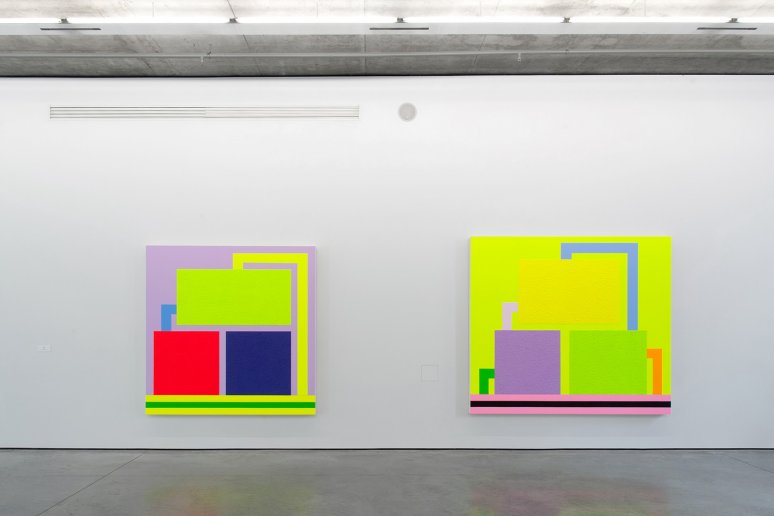23.06 — 10.09.2017One Man ShowPeter Halley
One of the most emblematic artists of his generation, Peter Halley is recognized in the history of contemporary painting as the legitimate heir of American abstractionism.
Reconsidering the work of Piet Mondrian, Josef Albers, and Donald Judd, Peter Halley employs geometric abstraction to develop his unique approach to painting, defining his renowned iconic style.
Encouraged by New York’s intense urban environment and the burgeoning flow of information generated by computer technology since the 1980s, Halley conceived a formal vocabulary of squares, rectangles, and bars as coded referents to the pervasiveness of geometry in modern life.
His works juxtapose meticulously crafted geometries with a glowing, artificial appearance, creating a complex visual experience based on contrasts and the form perfection. The artist uses bright and saturated industrial paints and materials such as DayGlo, metallic, and pearlescent. He incorporates Roll-a-Tex, a paint additive, to give the paintings a rough and textured surface.
Halley refers to these paints as a “hyper-realization” of the chromatic ambitions of modernism, viewing his vibrant palette as a symbol of “low-budget mysticism,” deliberately contrasting traditional artistic norms.
The artist’s blend of a deep understanding of the origins of abstract painting, along with a sense of the incredible pace of modern technology and urbanism, has earned him the reputation as one of the most influential contemporary art theorists. His museum exhibitions and public projects have become bridges between architectural ensembles and spaces of the past and present.
Masterfully balancing the delicacy of Minimalism with a vibrant color palette, Halley emphasizes the purity of pigments and the tactile quality of technique, exemplifying his iconic rigorous language and bold aesthetic.
In addition to his visual artistic endeavors, Halley works on essays on art and culture in 1981. This diversification of his creative output allowed him to articulate his ideas beyond visual representations. A collection of his essays titled “Peter Halley: Collected Essays 1981-1987” was published by Galerie Bruno Bischofberger in 1988, further establishing Halley as a significant voice in the art world.
In 1996, Halley and curator and writer Bob Nickas co-founded Index, a magazine inspired by Andy Warhol’s Interview that featured interviews with people in various creative fields.
Halley served as the Director of Graduate Studies in Painting and Printmaking at the Yale University School of Art from 2002 to 2011.
The artist’s works were included in the Sao Paolo Biennale, the Whitney Biennale and the 54th Venice Biennale and are represented in museums and art institutions such as:
Musee d’Art Contemporain (Bordeaux, France)
Museo Nacional Centro de Arte Reina Sofia (Madrid, Spain)
Stedelijk Museum (Amsterdam, Netherlands)
Des Moines Art Center (Des Moines, IA, USA)
Dallas Museum of Art (Dallas, TX, USA)
Museum of Modern Art (MoMA) (New York, NY, USA)
Kitakyushu Municipal Museum of Art (Kitakyushu, Japan)
Museum Folkwang (Essen, Germany)
Butler Institute of American Art (Youngstown, OH, USA)
Museum of Modern Art (St. Etienne, France)
Museum of Art in Santa Barbara (Santa Barbara, CA, USA)
Schirn Kunsthall (Frankfurt, Germany)



